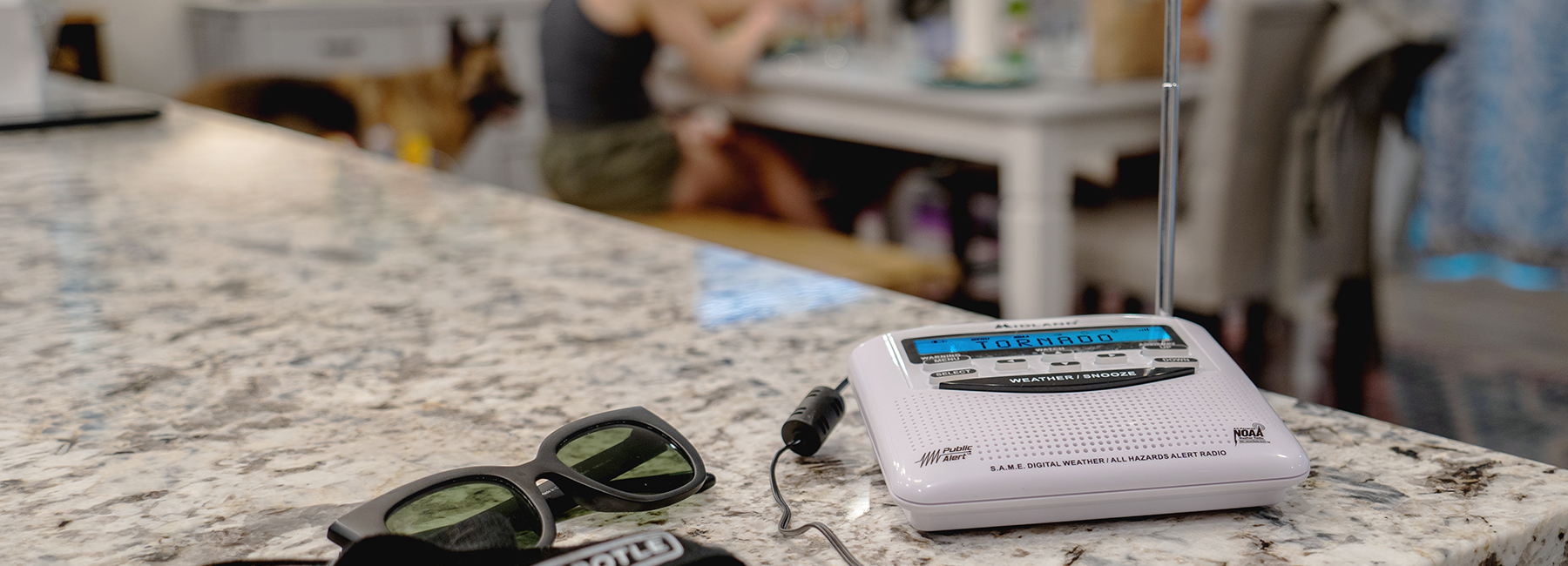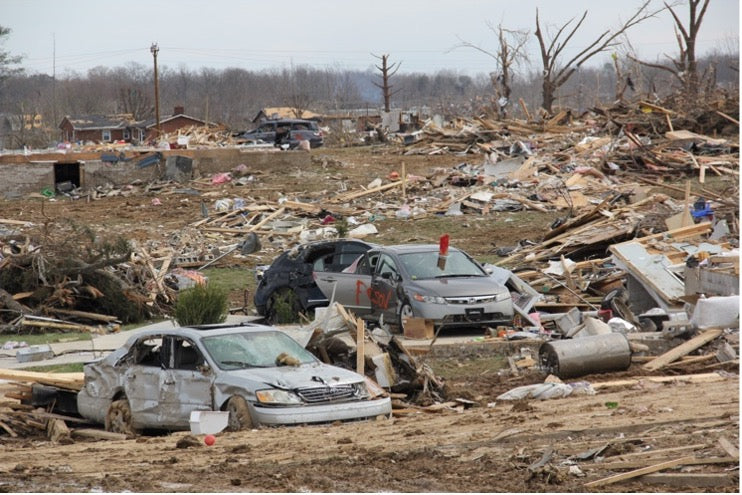
March 21, 2024
Midland's Meteorologist, Bruce Jones works with emergency managers across the United States to find funding to provide their communities with NOAA Weather Radios.
He shares how he works with emergency managers to find grant funding.
Outdoor tornado sirens are not designed to be heard indoors.
After the 1974 Super Tornado Outbreak, the National Weather Service saw the need for an “indoor tornado siren” and NOAA Weather Radio (NWR) was born.
Unlike outdoor sirens, whose wails tell you only that “something” is happening, NWR gives you a loud alert tone, followed by all the pertinent life-saving information: what the storm is, where it is, the direction and speed of movement, towns in the path of the storm, expected impacts of the storm, and directions for sheltering and surviving.
All this official information is provided at a much, much lower cost-per-home than an outdoor siren.
That’s why many EM’s choose weather radios first.
FEMA’s National Preparedness Goal identifies five mission areas and 32 core capabilities.
Among the 32 core capabilities is “Public Information and Warning”.
Knowing the importance and cost effectiveness of weather radios for EM’s, FEMA has several grant programs that will pay up to 75% of the price of radios, as well as strobe lights and pillow shaker accessories for the deaf and hard-of-hearing.
First, it’s vitally important to make sure NOAA Weather Radio is included in your five-year hazard mitigation plan.
With NWR as a designated goal for alerting your citizens, FEMA can grant you quick approval. Without it, your grant request is easily denied, so your first step is to make sure NWR is inserted in your five-year plan.

In the aftermath of a federally declared disaster in your state, FEMA releases Hazard Mitigation Grant Program(HMGP) funding, and any county in the state can apply for some of it, regardless of whether that county was directly impacted by the disaster.
Of all the HMGP funding awarded the state, a percentage is available for NWR purchases, and these are typically competitive bids.
Midland has worked with numerous EM’s who have leveraged HMGP funding to purchase hundreds or thousands of weather radios. Some give them away for free, others sell them at the Emergency Operations Center (EM's operations office) for the remaining 25% cost, which comes to about $6 per radio. Citizens must prove county residency to purchase one.
Some EMs cover their 25% of the HMGP grant with “in kind” services. One Oklahoma county used US Census data to identify every rural home in the county. The work done by volunteer firefighters while they stuffed those radios into mailboxes qualified for the county’s 25% match. In the process, the fire trucks got their regular practice as they drove the county’s roads and bridges.
If you’d like to apply for HMGP funding to purchase weather radios, this boilerplate grant paperwork has been successful in several states. Submit it to your state EMA…and good luck!
FEMA’s Emergency Management Performance Grant (EMPG) has also been used to obtain weather radios.
Unlike the HMPG, the EMPG is not a competitive bid. These are annual allocations, often based on population.
Some counties use EMPG to fund personnel, but others have purchased weather radios. Understand that buying is the first step, staffing and set-up for distribution will take some planning and manpower.
The effort needed for EMPG grants is very minimal. Emergency managers simply need an AEL number and justification. A common AEL# used is 04AP-09-ALRT.
America has the worst weather on the planet. As a meteorologist, Jones encourages every home, school and business to have Public Alert-certified NOAA All-Hazards Emergency Alert radio like the WR120.
It’s affordable, reliable, and easily programmable for your location. It operates much like a smoke detector, silently monitoring and alerting you when needed.
The information received via NOAA Weather Radio is far more useful and affordable than outdoor tornado sirens, and because they don’t require costly yearly maintenance, they’re popular with emergency managers.
The Cookeville, TN nocturnal EF-4 tornado killed 19 people.
Two local cell phone towers failed, but NOAA Weather Radio saved many lives. Don’t let your county’s citizens put all their eggs in one basket.
Obtain funding to provide as many NOAA Weather Radios as you can.
Everyone needs multiple, redundant ways to get life-saving warnings, and Midland emergency alert radios are the gold standard.

When cell towers fail, NOAA Weather Radio can still deliver life-saving alerts. Photo courtesy: Putnam County EMA



